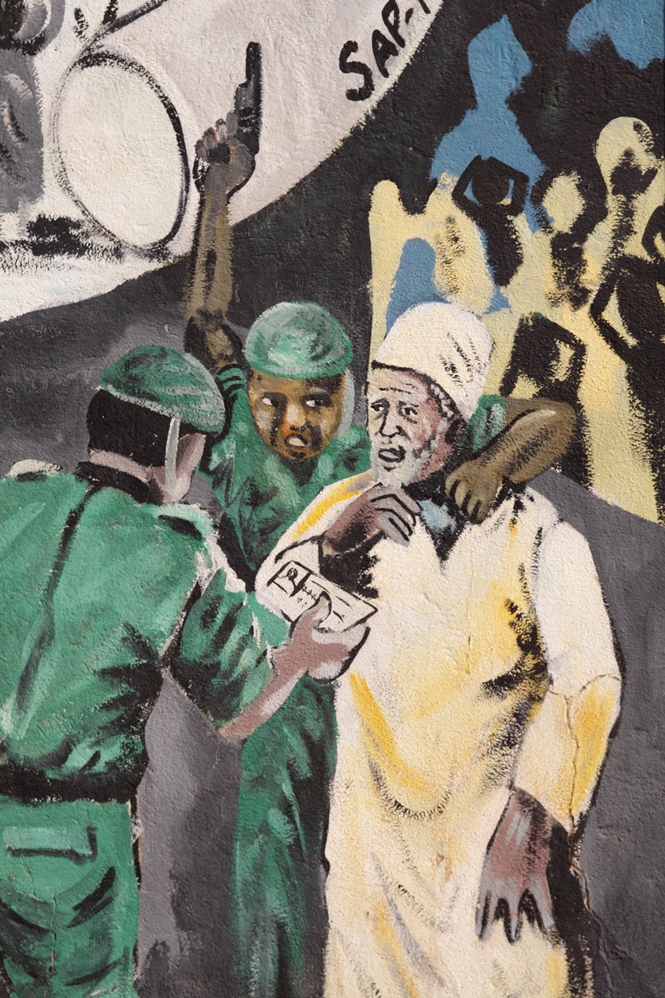Since 2002, when an insurgency split Côte d'Ivoire into two halves, the North and the West of the West-African country is held by a rebel movement. In 2006, Fofié Kouakou, the chief commander of the rebels in Korhogo, the largest city in the North, started a development program that, for the very first time under rebel domination, aimed at endowing the city with a new cultural centre and an architecture and culture competition in which all artists of Korhogo were invited to participate. Under his patronage, an already existing centre of the former state ministry for sports and culture was rebuilt and equipped with a new roof, a tribune, computers and other business machines.
The artists of the city were asked to submit proposals for monuments and other public artworks that would show “the new Korhog”, i.e. the city of the future. In addition, they were commissioned to paint the walls of the cultural centre. What arose out of this commission was a visual program about the past and the present state of the country. The main motifs were the formation of the nation during the colonial period and in particular how nationhood had changed since independence in 1960. Some paintings explicitly addressed the politics of belonging which had fuelled the identity crisis that, around the turn of the century, became one of the driving forces of the civil war. They also showed how the chief rebel wanted to end the harassment of the northern minorities and build a new nation.


